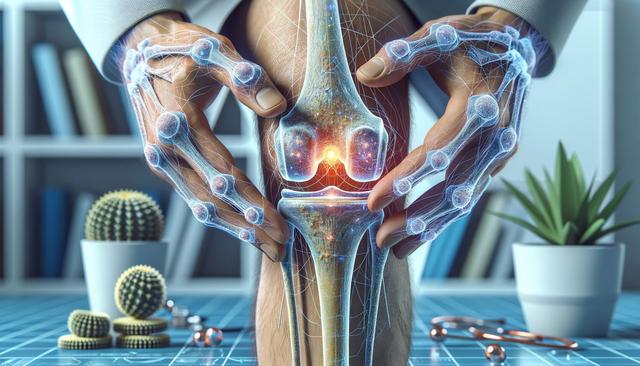Understanding Psoriatic Knee Arthritis
Psoriatic arthritis is a chronic inflammatory condition that can affect the joints and skin. When it targets the knees, it often leads to swelling, stiffness, and pain that can limit mobility and interfere with daily activities. Psoriatic knee arthritis is part of a broader autoimmune disorder where the immune system mistakenly attacks healthy joint tissue, particularly in individuals with psoriasis. Early recognition of the symptoms—such as joint tenderness, warmth, and visible inflammation around the knee—is critical for effective management and to prevent joint damage.
Psoriatic knee pain can vary from mild discomfort to severe joint dysfunction. The condition may present asymmetrically, affecting one knee more than the other, or it may flare up periodically. Understanding how psoriatic arthritis manifests specifically in the knee helps guide treatment choices and lifestyle adjustments. A key objective in treatment is to reduce inflammation and slow the progression of joint damage, ensuring long-term joint health and mobility.
Medical Treatment Options for Psoriatic Knee Arthritis
Managing psoriatic knee arthritis typically involves a combination of pharmacological therapies that target inflammation and immune system activity. Treatment plans are often personalized, depending on the severity of symptoms and the patient’s overall health. Common medical treatments include:
- Nonsteroidal anti-inflammatory drugs (NSAIDs) to reduce pain and swelling
- Disease-modifying antirheumatic drugs (DMARDs), which can slow joint damage
- Biologic therapies that target specific immune system pathways
- Corticosteroid injections for immediate relief during flare-ups
Early and consistent use of these medications can offer substantial relief and improve knee function. It is important to consult a rheumatologist who can monitor disease progression and adjust treatments as needed. In more severe cases or where other treatments are ineffective, surgical interventions such as joint replacement may be considered.
Physical Therapy and Exercise for Knee Mobility
In addition to medication, physical therapy plays a vital role in managing psoriatic knee pain. A well-structured exercise regimen can help strengthen the muscles around the knee, improve joint flexibility, and reduce stiffness. Physical therapists typically tailor programs to the individual’s capabilities and limitations. Beneficial activities include:
- Low-impact aerobic exercises such as swimming or cycling
- Strength training focused on the quadriceps and hamstrings
- Stretching routines to maintain the range of motion
- Balance and coordination exercises to prevent falls
Staying physically active is essential, but it’s equally important to avoid overexertion, which can worsen symptoms. Regular movement, even in short sessions, can significantly improve knee function over time. Patients should work with their healthcare provider to identify safe and effective exercise options.
Lifestyle Adjustments to Support Joint Health
Adopting certain lifestyle changes can further enhance the effectiveness of medical and physical treatments for psoriatic knee arthritis. These adjustments are designed to reduce inflammation, support joint function, and improve overall well-being. Key strategies include:
- Maintaining a healthy weight to reduce pressure on knee joints
- Eating an anti-inflammatory diet rich in vegetables, fruits, lean proteins, and omega-3 fatty acids
- Limiting alcohol and avoiding smoking, which may worsen inflammatory responses
- Using assistive devices such as knee braces or orthotic supports
Stress management is also important, as chronic stress can trigger flare-ups. Techniques such as mindfulness, yoga, and deep-breathing exercises can contribute positively to disease management. Consistency in these lifestyle habits can make a noticeable difference in symptom control and quality of life.
Monitoring and Long-Term Management
Psoriatic knee arthritis is a long-term condition that requires ongoing monitoring and adaptive care strategies. Regular check-ups with healthcare professionals are essential for tracking disease activity and adjusting treatment plans. Monitoring tools may include imaging studies like X-rays or MRIs to assess joint health and blood tests to evaluate inflammation markers.
Keeping a symptom journal can help identify triggers and track progress. It’s also useful to stay informed about new treatment developments and participate in support communities where experiences and coping strategies are shared. Over time, patients may need to adjust their management plans based on changes in their condition or lifestyle.
With a comprehensive approach that combines medication, physical activity, healthy habits, and regular medical oversight, many individuals with psoriatic knee arthritis can lead active, fulfilling lives while minimizing pain and preserving joint function.
Conclusion: A Holistic Approach to Managing Psoriatic Knee Pain
Effectively managing psoriatic knee pain involves more than just addressing symptoms—it requires a holistic approach that includes medical treatment, physical therapy, lifestyle changes, and long-term monitoring. By understanding the condition and adopting a proactive care plan, individuals can reduce inflammation, improve mobility, and maintain a higher quality of life. Collaboration with healthcare providers and a commitment to self-care are essential steps toward achieving better outcomes in the management of psoriatic knee arthritis.



Leave a Reply